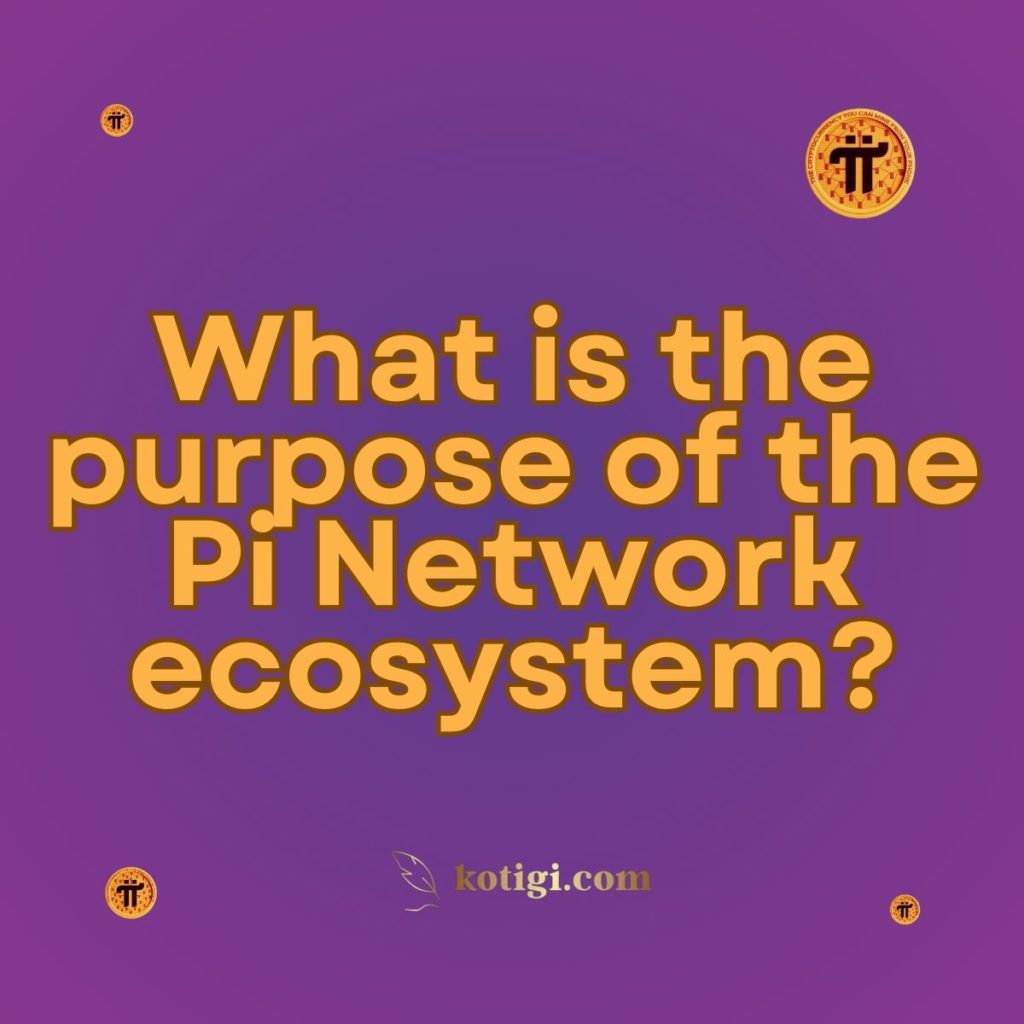
What is the purpose of the Pi Network ecosystem?
The Pi Network ecosystem is designed to create a decentralized digital economy where users can securely and easily exchange goods, services, and digital assets. This ecosystem is built on the principles of accessibility, inclusivity, and sustainability, aiming to bring the benefits of blockchain technology to a broader audience. Here’s a detailed look at the purpose and goals of the Pi Network ecosystem:
1. Democratizing Access to Cryptocurrency
1.1. Accessible Mining:
One of the primary purposes of the Pi Network ecosystem is to make cryptocurrency mining accessible to everyone. Unlike traditional cryptocurrencies, which require expensive hardware and significant energy consumption, Pi Network allows users to mine Pi coins using just their smartphones. This accessibility ensures that anyone with a smartphone can participate, democratizing the process of earning cryptocurrency.
1.2. Lowering Barriers to Entry:
By simplifying the mining process and eliminating the need for technical expertise, Pi Network lowers the barriers to entry for cryptocurrency. This inclusivity is central to the ecosystem’s purpose, as it seeks to engage a global audience, regardless of their technical background or financial resources.
2. Building a Decentralized Economy
2.1. Peer-to-Peer Transactions:
The Pi Network ecosystem is designed to facilitate peer-to-peer transactions within a decentralized framework. Users can exchange Pi coins for goods and services, fostering a self-sustaining economy that operates independently of traditional financial systems. This decentralized approach empowers users by giving them control over their transactions without the need for intermediaries.
2.2. Supporting Digital Commerce:
As the ecosystem evolves, it aims to support a wide range of digital commerce activities, including the buying, selling, and trading of digital assets, products, and services. This will create a vibrant marketplace where users can leverage their Pi coins for real-world value, further solidifying Pi Network’s role in the global digital economy.
3. Promoting Security and Trust
3.1. Securing Transactions:
Security is a core focus of the Pi Network ecosystem. By utilizing blockchain technology, Pi Network ensures that all transactions are secure, transparent, and immutable. This trustworthiness is essential for building confidence among users, making them more likely to engage in transactions within the ecosystem.
3.2. Ensuring User Privacy:
The ecosystem also prioritizes user privacy, implementing measures to protect personal information and ensure that transactions are conducted securely. This focus on privacy helps build a trustworthy environment where users can feel safe engaging in economic activities.
4. Fostering Community Growth and Engagement
4.1. Encouraging Participation:
The Pi Network ecosystem is designed to encourage active participation from its users. By rewarding users for their contributions, such as inviting new members or running a node, the ecosystem promotes a sense of ownership and engagement. This community-driven approach is key to the network’s growth and sustainability.
4.2. Building a Collaborative Environment:
The ecosystem fosters a collaborative environment where users can work together to enhance the network. Whether through developing applications, providing feedback, or participating in community events, users play an active role in shaping the ecosystem’s future.
5. Preparing for Future Use Cases
5.1. Enabling dApps Development:
A long-term goal of the Pi Network ecosystem is to support the development of decentralized applications (dApps). By providing a platform for developers to create and launch dApps, Pi Network aims to expand its use cases and increase the utility of Pi coins within the ecosystem.
5.2. Supporting Real-World Applications:
The ecosystem is also focused on enabling real-world applications for Pi coins, such as payments for goods and services, remittances, and microtransactions. By creating practical use cases, Pi Network seeks to integrate its digital currency into everyday life, enhancing its value and relevance.
Conclusion
The purpose of the Pi Network ecosystem is to democratize access to cryptocurrency, build a decentralized economy, promote security and trust, foster community growth and engagement, and prepare for future use cases. By creating an inclusive and accessible platform, Pi Network aims to bring the benefits of blockchain technology to a global audience, empowering users to participate in a new kind of digital economy. The ecosystem’s focus on accessibility, security, and community-driven development positions it as a key player in the evolving landscape of decentralized finance and digital commerce.





